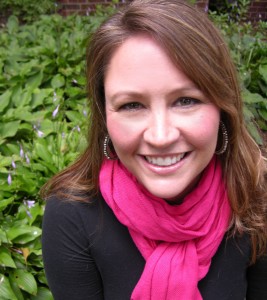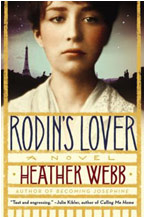 Today we welcome book reviewer and multi-talented author Mary Burns to Between the Sheets. Mary’s latest release, PORTRAITS OF AN ARTIST, chronicles the mysterious life of John Singer Sargent and the secret love and heartbreak behind his paintings.
Today we welcome book reviewer and multi-talented author Mary Burns to Between the Sheets. Mary’s latest release, PORTRAITS OF AN ARTIST, chronicles the mysterious life of John Singer Sargent and the secret love and heartbreak behind his paintings.
You have an incredible span of experience from writing executive speeches to producing a morning talk show. What drew you to fiction writing?
I always loved reading stories, from my earliest days, and I wrote a story about The Beatles (yay) in 1964, which started me on my writing road. Lots of short stories and poetry—even sonnets—followed throughout high school and college, then making a living kind of got in the way, as it often does. But in 1999, when I left my (almost-last) corporate position, I decided in was a now or never moment. I signed up to go to my first-ever writing conference, the Mendocino Coast Writers Conference in Northern California, and it was a tremendously inspiring experience. I began my working career as a high school English teacher, and language was always very important to me—not only the beauty and meaning of words, but the structure and composition of ideas into sentences and paragraphs—I actually loved diagramming sentences, and find it really sad that it’s just not taught anymore.
You’ve written about a woman who wrote the Bible and now a 19th century painter. How do you choose a subject for your fiction? Why John Singer Sargent?
As many authors will attest, the subject often chooses you! In the case of “J-The Woman Who Wrote the Bible”, I came across a wonderful non-fiction book by the famous critic Harold Bloom, called The Book of J. Bloom collaborated with a colleague who was a poet and who also knew Hebrew, to newly translate those sections of Genesis and Exodus which scholars had determined were “most likely” written by the first person to write down the oral stories of the Israelite people, called the “J-writer” after the use of the word “Yahweh” (Jahweh in German) as the primary name for God in those two books. Bloom, doing his usual incisive and often controversial literary critique of the Bible, posited that the J-writer was a woman, probably a member of King David’s or King Solomon’s court, educated (obviously), and with a mischievous sense of humor that spared neither King nor God in regard to religious and social norms. I read that book twice in a row over a period of a month, and decided I just simply had to write a novel about that woman.
With Sargent, it was his paintings I fell in love with, in particular, the mysterious “Daughters of Edward Darley Boit”, which is in the Boston Museum of Fine Arts, given to the museum in the early 1900’s by the four Boit daughters upon the death of their father. There was a huge retrospective exhibition at the National Gallery in Washington, D.C. in 1999 which I visited three times over a period of two or three days (I guess I get obsessive about things) and although it took me ten years to actually start writing the novel, I never forgot the stunning portraits of this enigmatic painter.
I LOVE this time period in Europe–the industrial revolution, the Golden Age, or the Belle Époque as the French would say. Can you share a fun tidbit that didn’t quite fit within the context of the novel?
There were so many things about Venice, Paris and London that I wanted to write about from that time period—the daily life, the restaurants, the way things were changing, especially in Paris, with the Commune not that long over, and the continuing demolition of old City quarters to make way for the new wide boulevards and avenues; and in Italy altogether, with the collapse of the power of the Vatican in the mid-1870’s and the unbelievable political turmoil throughout the country. London was in the midst of building its metropolitan subway (begun in 1863); in 1884, when Sargent moved there, the “Circle” line had just been opened, connecting the Metropolitan to the District lines. Probably the most ‘fun’ thing I didn’t include was the growing use of telegrams by people of means to communicate with each other—sometimes several times a day, and usually within the same city—oh, those society types! I believe that a fairly frequent level of communication was available with regular posted letters—London, at least, had a twice-daily pickup and delivery within the city boundaries—but telegrams were obviously more ‘sexy’. There were so many inventions that had a huge impact on people’s lives—about ten years after the date of my novel, Sargent acquired a phonograph and was said to have enjoyed it immensely, continually buying new records and playing them for his friends—what a revolution that must have been!
Talk about your process. What does your revision stage look like?
I recently read Michael Gorra’s incredibly wonderful book about Henry James’s revisions of his Portrait of a Lady, and I kept thinking that in a way, James was lucky he didn’t work on a computer—he could continually see the changes he made, the words he crossed out and inserted, and it must have been very interesting to see the progression of a work that way. (It’s certainly interesting to me to see what James did!) With a computer, you just delete the words and write others in their place, and the actual changes are lost in the ether.
The most critical issues I’ve had with revisions have to do with Point of View. I find myself changing the point of view time and again, after I’ve written a first draft. I have a novel on the shelf which I’ve re-written at least four times, each with a different POV: first person, multiple first person, third person omniscient, close third person, even one from the POV of a dead person looking back at what the heck happened! On a very small, detailed level, it’s the word choices that I find both exasperating and exhilarating—as I read over what I’ve written, I see plain vanilla words that have no sensuality or spirit, repetitions in the same sentence or paragraph that suddenly pop out at me—it helps to read passages aloud, especially dialogue, as one’s ear can really pick up more odd-sounding and repeated words than one’s eye can. It’s very satisfying, then, to take the time to really think about, feel, and choose the better word—or best word, if you can find it!
What advice would you give to first time novelists?
Make sure you are in love with your subject, your characters, your time period. Love will keep you going through all the tedium of research and editing.
SPEED ROUND
FAVORITE SARGENT PAITING: A Street In Venice
I describe this painting in my novel, and when I visited Venice in September, 2011, I found an alleyway that could very easily have been the very one Sargent used as a setting.
BEST PLACE ON EARTH: Mendocino, California
HIDDEN TALENT: Making Stained Glass Windows
BIGGEST VICE: Veuve Cliquot Champagne
 ABOUT THE AUTHOR
ABOUT THE AUTHOR
Mary Burns lives in San Francisco with her husband Stu. She is a member of and reviewer for the Histor for the North American HNS Conference to be held in St. Petersburg, Florida in mid-June. Her novel Portraits of an Artist was published on February 1, 2013 from Sand Hill Review Press. Please visit her blog about all things Sargent at www.portraitsofanartist.blogspot.com.














